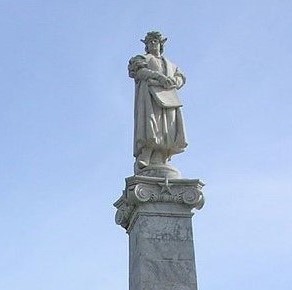Imperial/ Colonial

Victoria and Albert Museum
The video series How Was it Made? demonstrates a variety of craft methods: Japanese hikihaku obi, medieval stained glass windows, and book printing and binding.
Short Teaching Module: Controversial Historical Monuments
I use images of three historical statues that triggered controversy beginning in the 2010s to teach about the concept of contested historical memory and to have students consider parallels and differences among public history controversies in different parts of the world.

Cecil Rhodes monument removal, Cape Town, South Africa
The bronze statue of a seated Cecil Rhodes (1853-1902), on the campus of the University of Cape Town (UCT), was sculpted by Marion Walgate, one of the first white female sculptors in South Africa.

Cecil Rhodes monument, Cape Town, South Africa
The bronze statue of a seated Cecil Rhodes (1853-1902), on the campus of the University of Cape Town (UCT), was sculpted by Marion Walgate, one of the first white female sculptors in South Africa.

Christopher Columbus monument removal, Buenos Aires, Argentina
The Monument to Christopher Columbus (1451?-1506), located in a plaza in front of the Casa Rosada government palace, was inaugurated in 1921.

Christopher Columbus monument, Buenos Aires, Argentina
The Monument to Christopher Columbus (1451?-1506), located in a plaza in front of the Casa Rosada government palace, was inaugurated in 1921.

Primer: Comparative History
Comparison is used in many different ways in world history, both implicitly and explicitly.
Excerpt from Travels in Africa
Imperialism is one of the most pertinent topics in relation to travel and exploration. By the end of the 19th century, the spread of European imperialism had made many areas of the world “safe” for women travelers.

Primer: Gender in World History
Gender history developed in the 1980s out of women’s history, when historians familiar with studying women increasingly began to discuss the ways in which systems of sexual differentiation affected both women and men.

Short Teaching Module: European Maps of the Early Modern World
I use images of three historical maps for topics on colonial exploration and for interpreting historical evidence in undergraduate courses on history and historical methodology. I have several aims in using the maps.